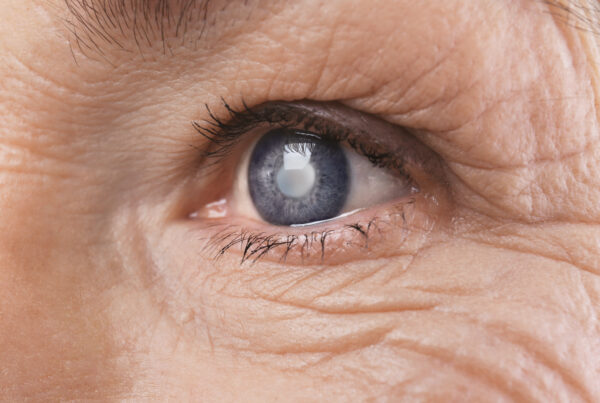
You’ve heard about it on the news. You’ve heard about it from the politicians. Maybe you even heard about it from your relatives over the holidays. But now it’s time you heard the hard truth about the Southern Border from the real expert: your neighborhood eye doctor.
It’s true. Having a safe and secure border is vitally important—especially when it comes to eye care. Everything you see comes through the front wall of your eye, known as the Cornea. Your vision is focused by the Cornea’s clear surface along with the Lens inside your eye. When Cornea Specialists, such as myself, talk about the regions of the Cornea, we consider its lower edge to be the Southern Border.
Your Cornea has basically 3 layers:
- The surface skin (Epithelium) forms the outer protection of the Cornea. It’s just 5 cells thick, and these cells shed each week and are replaced by new cells growing from the edges of the cornea.
- The inside skin (Endothelium) keeps your Cornea from swelling to maintain clarity so you can see through it. The Endothelium is only 1 cell thick, and it needs to last your entire lifetime.
- Between these two layers is the Stroma, a spongy layer of collagen that represents the strength of the wall.
But for this blog, let’s just talk about the Southern Border of the Epithelium, which can have lots of problems if you don’t take good care of it.
If your upper eyelid doesn’t close all the way, that Southern Border will dry out and can become ulcerated and infected. If you have congestion in the glands of your lower eyelid, or an infection around the lower eyelashes, known as blephari:s, it can spread the infection into your lower Cornea. This is often caused by bacteria along the lower eyelid.
A sty is when the eyelid glands get infected, and that infected gland rubs against the Southern Border of your Cornea. This could also cause infection, or what is termed Staph Marginal Kera::s. If you get a big whiff of dust to the face and you blink, the eyelid may push the problem right to that Southern Border of your Cornea where it can scratch and irritate your eye.
Now that I’ve gotten you all worked up about the potential crises at the Southern Border. Let’s talk about common–sense solutions for Border Security.
For many elderly people with Dry Eye Disease, it can be as simple as using artificial tears or lubricant eye drops during the day. Although the politicians don’t think we notice, as people age, their skin starts to sag. If your lower eyelid sags, it won’t protect the Southern Border of your Cornea and you may need plastic surgery to correct it.
If you are getting crusting or stickiness of the lower eyelids and eyelashes, it will need to be cleansed daily with medicated pads that are available over–the–counter at your pharmacy and grocery stores. And certainly, if your eye looks red or gets irritated or has a goopy discharge, see your eye doctor to evaluate your problem and prescribe effective treatment.
Now you may think that all the use of the terms “Southern Border Security” and your eye having a safe, secure “Southern Border” is just to have internet search engines find this blog and get people to click on it. And you would be right! But it all is important to take good care of your Cornea to keep your eye safe and your vision clear. That’s what we at SureVision Eye Centers and The Dry Eye Insitute do!



